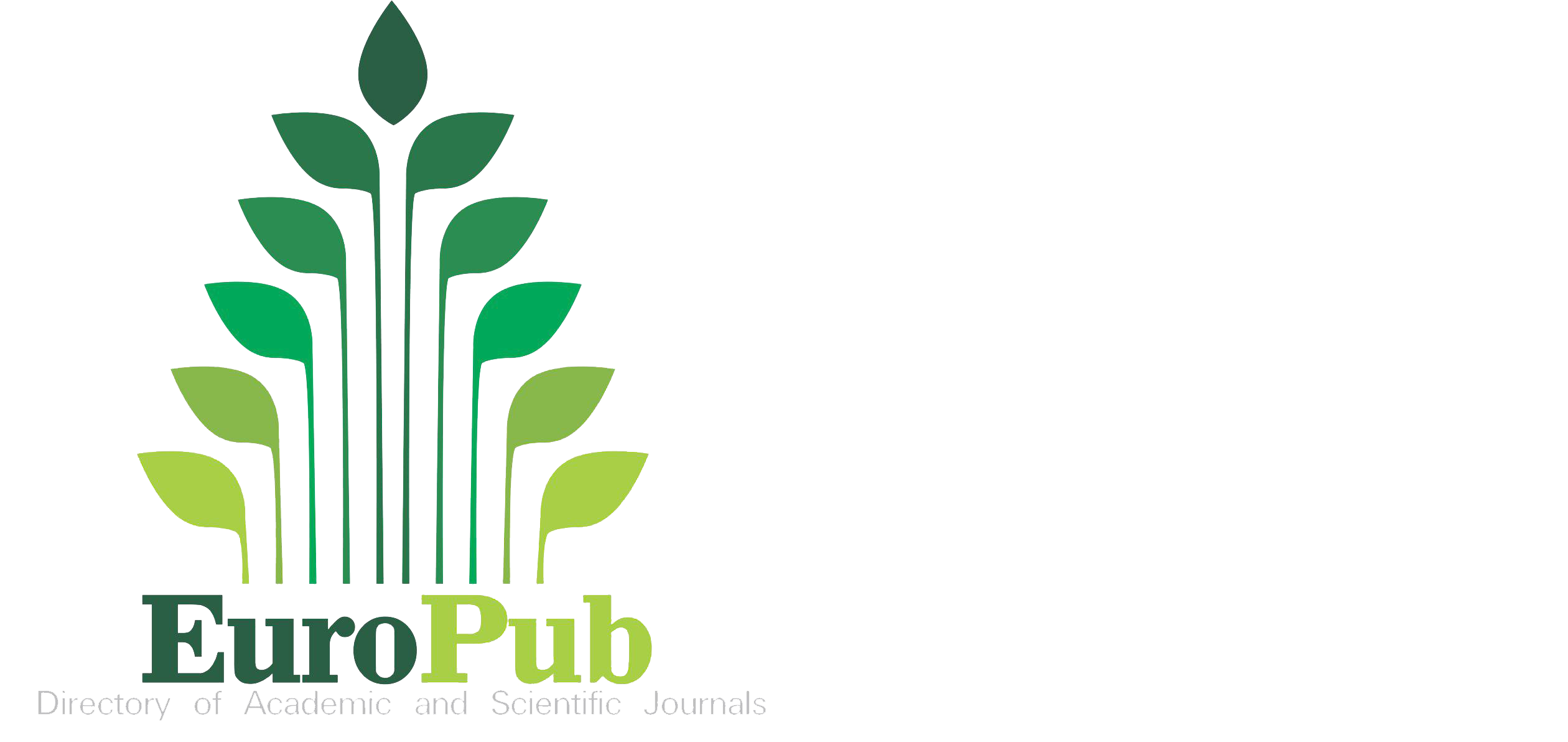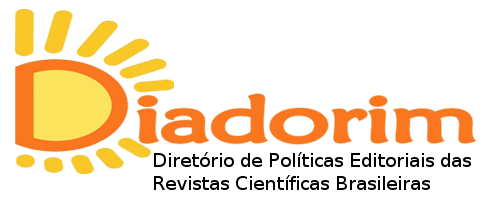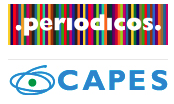Evaluation of an experience of Dental Education students with active teaching methodologies in Histology class
DOI:
https://doi.org/10.35699/2237-5864.2021.23804Keywords:
Higher education, Dental education, HistologyAbstract
In search of improving the teaching-learning process in the health area, pedagogical strategies and tools, which enable a more active participation of students, have been proposed as alternatives to replace or complement conventional and unidirectional teaching, considering as presuppositions: the meaningful learning; the teacher as a mediator; and the need of learning how to learn. In this context, the present study evaluated the perception of students in Histology class, from the Dentistry degree program at Universidade Estadual Paulista in São José dos Campos/SP, after applying different pedagogical strategies from traditional expository classes. Based on the feedback received from the students about the experiences in the classroom, it was possible to verify positive evaluations, using active teaching methodologies and that, although opinions may diverge in some cases, the answers indicate that such methodologies can contribute to more effective learning during the degree program.
Downloads
References
AZEVEDO, S. B.; PACHECO, V. A.; SANTOS, E. A. DOS. Metodologias ativas no ensino superior. Revista Docência do Ensino Superior, Belo Horizonte, v. 9, n. 9, p. 1-22, 2019. DOI: https://doi.org/10.35699/2237-5864.2019.2573.
BERBEL, N. A. N. A problematização e a aprendizagem baseada em problemas: diferentes termos ou diferentes caminhos? Interface (Botucatu), Botucatu, v. 2, n. 2, p. 139-154, 1998. DOI: https://doi.org/10.1590/S1414-32831998000100008.
BERBEL, N. A. N. As metodologias ativas e a promoção da autonomia de estudantes. Ciências Sociais e Humanas, Londrina, v. 32, n. 1, p. 25-40, 2011. DOI: http://dx.doi.org/10.5433/1679-0383.2011v32n1p25.
BOLLELA, V. R.; SENGER, M. H.; TOURINHO, F. S. V.; AMARAL, E. Aprendizagem baseada em equipes: da teoria à prática. Medicina (Ribeirão Preto), Ribeirão Preto, v. 47, n. 3, p. 293-300, 2014. DOI: https://doi.org/10.11606/issn.2176-7262.v47i3p293-300.
BRANCO, C. C.; ALVES, M. M. Complexidade e sala de aula invertida – considerações sobre o método. In: CONGRESSO NACIONAL DE EDUCAÇÃO, 12, 2015, Curitiba. Anais [...]. Curitiba: Pontifícia Universidade Católica do Paraná, 2015. p. 15464-15477.
BRASIL. Ministério da Educação. Resolução CNE/CES 3, de 19 de fevereiro de 2002. Institui Diretrizes Curriculares Nacionais do Curso de Graduação em Odontologia. Diário Oficial da União: seção 1, Brasília, DF, p. 10, 2002.
CYRINO, E. G.; TORALLES-PEREIRA, M. L. Trabalhando com estratégias de ensino-aprendizado por descoberta na área da saúde: a problematização e a aprendizagem baseada em problemas. Cadernos de Saúde Pública, Rio de Janeiro, v. 20, n. 3, p. 780-788, 2004. DOI: https://doi.org/10.1590/S0102-311X2004000300015.
DOWNING, S. W. A multimedia-based histology laboratory course: elimination of the traditional microscope laboratory. Medinfo, v. 8, pt. 2, n. 1695, n. p., 1995.
FLAHERTY, J. O.; PHILLIPS, C. The use of flipped classrooms in higher education: a scoping review. The Internet and Higher Education, v. 25, p. 85-95, 2015. DOI: https://doi.org/10.1016/j.iheduc.2015.02.002.
HEIDGER, P. M.; DEE, F.; CONSOER, D.; LEAVEN, T.; DUNCAN, J.; CREITER, C. Integrated approach to teaching and testing in histology with real and virtual imaging. Anatomical Record, v. 269, n. 2, p. 107-112, 2002. DOI: https://doi.org/10.1002/ar.10078.
JOHNSON, S.; PURKISS, J.; HOLADAY, L.; SELVIG, D.; HORTSCH, M. Learning histology – dental and medical students’ study strategies. European Journal of Dental Education, v. 19, n. 2, p. 65-73, 2015. DOI: https://doi.org/10.1111/eje.12104.
KUMAR, R. K.; FREEMAN, B.; VELAN, G. M.; DE PERMENTIER, P. J. Integrating histology and histopathology teaching in practical classes using virtual slides. Anatomical Record – Part B New Anatomist, v. 289, n. 4, p. 128-133, 2006. DOI: https://doi.org/10.1002/ar.b.20105.
MACEDO, K. D. S.; ACOSTA, B. S.; SILVA, E. B.; SOUZA, N. S.; BECK, C. L. C.; SILVA, K. K. D. Active learning methodologies: possible paths to innovation in health teaching. Escola Anna Nery, Rio de Janeiro, v. 22, n. 3, p. 1-9, 2018. DOI: https://doi.org/10.1590/2177-9465-ean-2017-0435.
MICHAELSEN, L. K.; KNIGHT, A. B.; FINK, L. D. Team-based learning: a transformative use of small groups. Westport: Greenwood publishing group, 2002. Ebook. Disponível em: https://books.google.com.br/books?id=8S8efQkqeqIC&printsec=frontcover&hl=pt-BR&source=gbs_ge_summary_r&cad=0#v=onepage&q&f=false. Acesso em: 26 abr. 2021.
MITRE, S. M.; SIQUEIRA-BATISTA, R; GIRARDI-DE-MENDONÇA, J. M.; MORAIS-PINTO, N. M.; PINTO-PORTO, C.; MOREIRA, T.; HOFFMANN, L. M. A. Metodologias ativas de ensino-aprendizagem na formação profissional em saúde: debates atuais. Ciência e Saúde Coletiva, Rio de Janeiro, v. 13, supl. 2, p. 2133-2144, 2008. DOI: https://doi.org/10.1590/S1413-81232008000900018.
OLIVEIRA, B. L. C. A.; LIMA, S. F.; RODRIGUES, L. S.; PEREIRA JUNIOR, G. A. Team-Based Learning como forma de aprendizagem colaborativa e Sala de Aula Invertida com centralidade nos estudantes no processo ensino-aprendizagem. Revista Brasileira de Educação Médica, Brasília, v. 42, n. 4, p. 86-95, 2018. DOI: https://doi.org/10.1590/1981-52712015v42n4rb20180050.
RIBEIRO, E. N.; MENDONÇA, G. A. A.; MENDONÇA, A. F. A importância dos ambientes virtuais de aprendizagem na busca de novos domínios da EAD. In: CONGRESSO INTERNACIONAL DE EDUCAÇÃO A DISTÂNCIA, 23, 2007, Curitiba. Anais [...]. Curitiba: Associação Brasileira de Educação a Distância, 2007.
ROTELLAR, C.; CAIN, J. Research, perspectives, and recommendations on implementing the flipped classroom. American Journal of Pharmaceutical Education, v. 80, n. 2, 2016. DOI: https://dx.doi.org/10.5688%2Fajpe80234.
SANTA-ROSA, J. G.; STRUCHINER, M. Tecnologia educacional no contexto do ensino de histologia: pesquisa e desenvolvimento de um ambiente virtual de ensino. Revista Brasileira de Educação Médica, Rio de Janeiro, v. 35, n. 2, p. 289-298, 2011. DOI: https://dx.doi.org/10.1590/S0100-55022011000200020.
SIVIERO, F.; OLIVEIRA, S. F. Modernização do ensino de biologia tecidual. Revista da Graduação USP, v. 1, n. 1, p. 35-40, 2016. DOI: https://doi.org/10.11606/issn.2525-376X.v1i1p35-40.
TÉCNICAS Histológicas - Uma Abordagem Prática. Produção: Genilton José Vieira, Leonardo Perim, Luzia de Fátima Gonçalves Caputo, Pedro Paulo de Abreu Manso. Roteiro: Luzia de Fátima Gonçalves Caputo, Pedro Paulo de Abreu Manso. Laboratório de Patologia do Instituto Oswaldo Cruz – FIOCRUZ/Serviço de Produção e Tratamento de Imagem do Instituto Oswaldo Cruz – FIOCRUZ. Rio de Janeiro, 2009. 1 vídeo (70 min). Disponível em: https://www.youtube.com/watch?v=RlyTg64AT9E. Acesso em: 27 abr. 2021.
TREVISAN, A. L.; AMARAL, R. G. A Taxionomia revisada de Bloom aplicada à avaliação: um estudo de provas escritas de Matemática. Ciência & Educação, Bauru, v. 22, n. 2, p. 451–464, 2016. DOI: https://doi.org/10.1590/1516-731320160020011.
Downloads
Published
How to Cite
Issue
Section
License
Copyright (c) 2021 Isis Patrícia Soares Silva Dias, Mariana Raquel da Cruz Vegian, Tábata Prado Sato, Keila Cristina Miranda, Luana Marotta Reis de Vasconcellos, Miguel Angel Castillo Salgado, Marianne Spalding

This work is licensed under a Creative Commons Attribution 4.0 International License.
Authors who publish in this journal retain the copyright and grant the journal the right of first publication, with the work simultaneously licensed under the Creative Commons Attribution License which allows the sharing of work with acknowledgment of authorship and initial publication in this journal.
Authors are authorized to take additional contracts separately, for non-exclusive distribution of the version of the work published in this journal (e.g. publish in institutional repository or as a book chapter), with acknowledgment of authorship and initial publication in this journal.
Open access policy:
Revista Docência do Ensino Superior is an Open Access journal, which means that all content is available free of charge, at no cost to the user or their institution. Users may read, download, copy, distribute, print, search, or link to the full texts of the articles, or use them for any other legal purpose, without seeking prior permission from the publisher or author, provided they respect the license to use the Creative Commons used by the journal. This definition of open access is in line with the Budapest Open Access Initiative (BOAI).
























